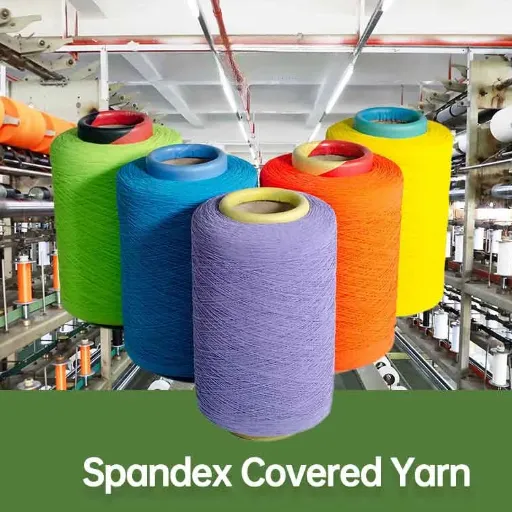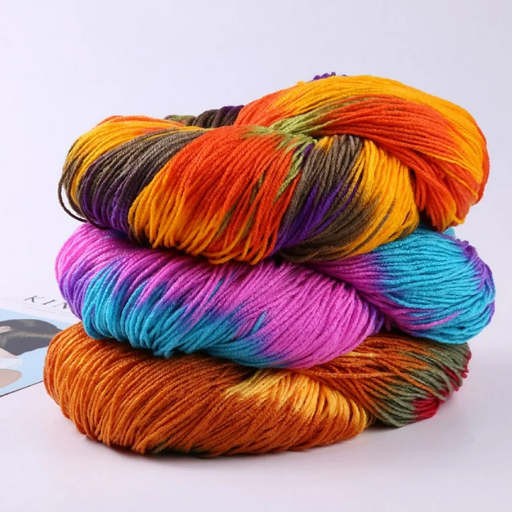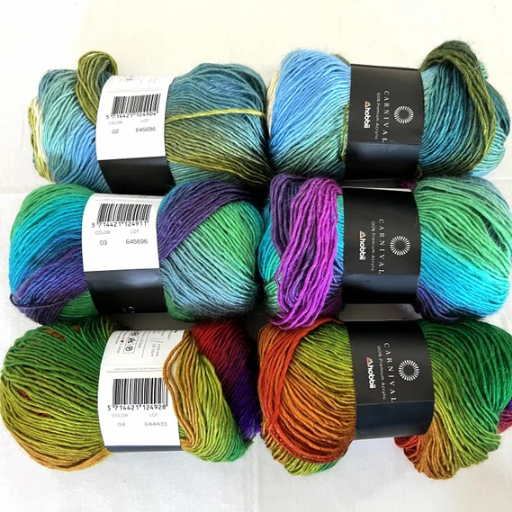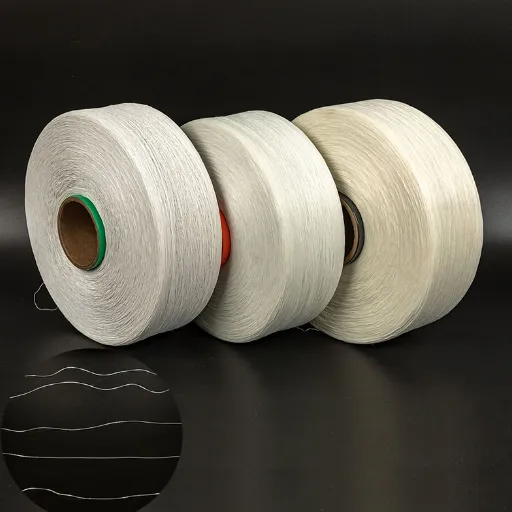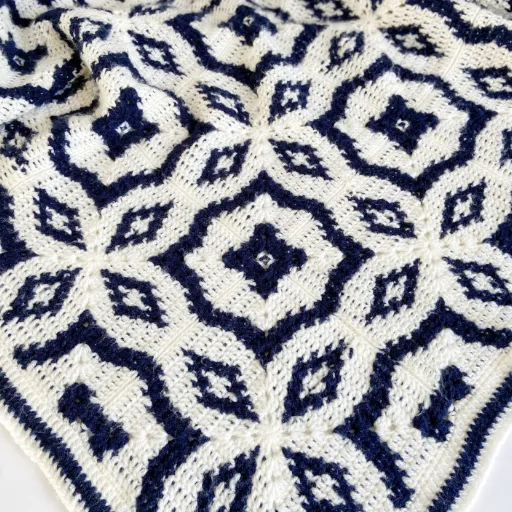Polyester and acrylic are the two synthetic fabrics that most often share the limelight of versatility and extensive usage. However, although these two materials look alike initially, they have different properties, advantages, and practical applications that keep them apart. This article will dispel the myth that you have ever asked yourself if polyester and acrylic are the same. We will closely examine the differences between these fabrics in terms of manufacturing processes, their durability, feel, and best uses. Knowledge of these differences will help you make better choices when selecting textiles for clothing, home décor, or outdoor gear.
Understanding Polyester and Acrylic
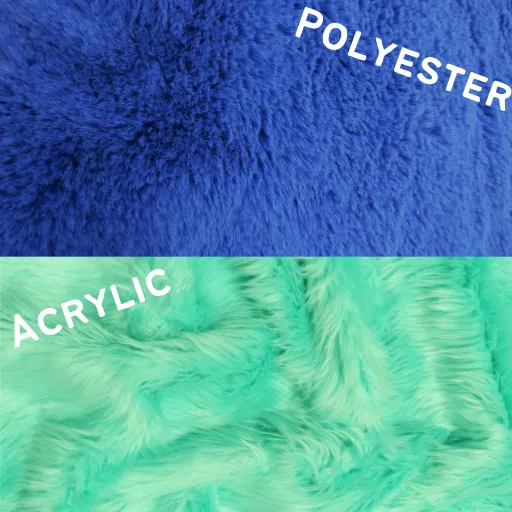
Polyester and acrylic are synthetic fibers, but their properties and applications are different. The artificial process that uses petroleum-based polymers to create polyester results in a fiber that is very durable, resistant to creasing, and capable of maintaining its shape. The strength and moisture-wicking properties of polyester make it suitable for clothing, upholstery, and outdoor gear. In contrast, the process of acrylic involves converting polyacrylonitrile into a fiber with a very light and soft texture and appearance, similar to wool. This is the main reason why acrylic is often found in sweaters, blankets, and other cold-weather textiles that require warmth and light weight. Although both materials are versatile and durable, polyester usually excels in the production of activewear and outdoor items, while acrylic is the type for cozy and everyday essentials.
What is Polyester?
Polyester is a man-made fabric that consists of polyethylene terephthalate (PET), a type of plastic. The process of making polyester involves a chemical reaction that uses petroleum, air, and water. Polyester is known for its good durability, flexibility, and resistance to wrinkling and shrinking, making it widely adopted for the production of garments, upholstery, and various industrial products. Its moisture-wicking and quick-drying properties contribute to its popularity in activewear and outdoor gear markets. Furthermore, polyester can be combined with other fibers such as cotton to improve its comfort and usability. As technology continues to improve, recycled polyester made from plastic bottles is now recognized as a sustainable alternative in the textile industry.
What is Acrylic?
Acrylic is a man-made fiber produced from a polymer called polyacrylonitrile, which comes from fossil fuels such as oil or natural gas. Acrylic’s main features are its soft and light nature, which is why it is widely used in garments like sweaters, wraps, and blankets at a lower cost compared to wool. Besides, its ability to resist moth, mildew, and shrinkage has made acrylic a long-lasting material for fashion and home decoration textiles. Moreover, the dyeing of acrylic fibers can result in highly bright and vivid colors, which is why they are widely used in the fashion industry. Due to its chemical structure, environmental sustainability concerns have guided the research and production of eco-friendly variations of acrylic fibers.
Differences Between Acrylic and Polyester
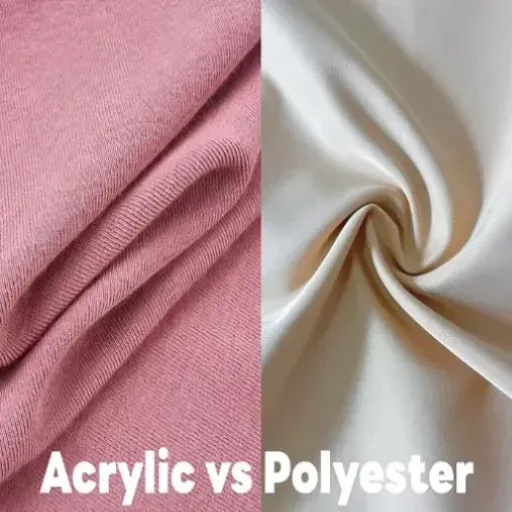
Acrylic and polyester are both artificial fibers with characteristics that contrast with each other and are used differently.
| Property | Acrylic | Polyester |
|---|---|---|
| Composition | Mainly acrylonitrile | Polymers from petroleum |
| Texture | Soft, wool-like texture | Smooth and strong |
| Durability | Less durable, may pill | More durable and resistant |
| Moisture-Wicking | Retains moisture | Excellent moisture-wicking |
| Heat Tolerance | Lower heat tolerance | Higher heat tolerance |
📌 Key Differences Summary:
- Composition: The base material for acrylic is mainly acrylonitrile, while polyester is derived from polymers originating from petroleum.
- Texture: Acrylic is soft and has a texture similar to wool, hence it is used in making warm clothing such as sweaters and blankets. Conversely, polyester is smooth and is often used in sportswear and outdoor equipment because of its strength.
- Durability: Although both acrylic and polyester fibers can resist several adverse effects, polyester is the stronger of the two. It is also the one that gets less damaged over time because it’s very resistant to stretching, shrinking, and wrinkles. On the contrary, less durable acrylic may pill while it is being worn.
- Moisture-Wicking: Polyester is very good at drawing moisture away from the body, making it the right fabric for activewear. On the contrary, acrylic retains moisture, which can be a disadvantage during very physically demanding activities.
- Heat Tolerance: Polyester can bear more heat, while acrylic is less so and may melt in very high heat.
Durability Comparison: Polyester vs Acrylic
If we look at the strength of fabrics, polyester clearly beats acrylic as the most durable and strongest of the two, even after years of use. The nature of these fibers makes them challenging, as they allow polyester to withstand washing, stretching, and UV rays well. On the other hand, acrylic is soft and light but weak, so it can easily degrade and will not last as long as polyester. For areas requiring the toughest and longest-lasting materials, such as outdoor equipment or sportswear, polyester is the material of choice most of the time.
Moisture-Wicking and Breathability Properties
Polyester is a material praised for its excellent ability to wick away moisture, which is why it has become the top choice for active and gym garments. The synthetic fibers do not take in water but instead move it to the outside, where it evaporates quickly, thus keeping the wearer dry and comfortable. This characteristic can be further developed by modern technologies like engineered weaves or coatings, which are capable of offering better sweat management.
Conversely, acrylic is a less effective material for moisture-wicking. Its less permeable structure causes heat and moisture to get trapped, thus it cannot be used for high-intensity activities or hot places. The two materials are such that polyester’s moisture-wicking and breathability properties are far superior, making it the more practical choice for making clothes where physical exertion or changing environmental conditions are the factors to consider.
Environmental Impact of Polyester and Acrylic
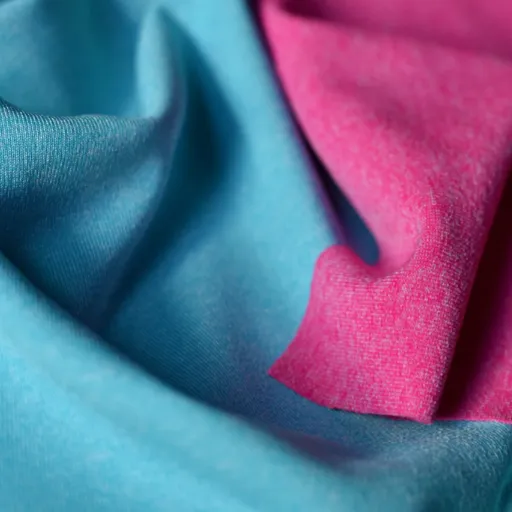
Polyester and acrylic both have significant impacts on the environment, primarily because they are synthetic. Petroleum is the source of polyester, and its production is highly energy-intensive, leading to the emission of greenhouse gases. Moreover, during washing, polyester clothes lose microplastics, which eventually reach the water bodies and cause the death of aquatic creatures. The environmental impact of acrylic, which is also made from petroleum, is not much different. The manufacturing of acrylic emits toxic substances, including acrylonitrile, that endanger both the health of factory workers and the surrounding environment. Neither types of plastic decompose, so their waste remains in nature for a very long time. In summary, both polyester and acrylic are still far from being responsible materials regarding nature and human health.
Polyester’s Environmental Footprint
The environmental impact of polyester is a significant issue that is increasingly becoming a top concern on today’s planet, and the continuous increase in its production exacerbates the situation. Recent statistics indicate that the world uses more than 52% of its fiber production for polyester, thus it is the most consumed fiber in textiles. The process of creating this synthetic fiber primarily depends on fossil fuels, which, in turn, release considerable quantities of greenhouse gases into the environment. In addition to that, washing polyester clothes contributes to the release of microplastics into water systems, where these microplastics are transferred not only to marine life but also to animals, thus creating a severe risk to both the environment and human health. Although the recycling of polyester is commendable, it remains a small portion of the total production and does not eliminate the environmental impact. The dilemma remains whether the industry will become more sustainable or continue developing biodegradable alternatives to lessen the long-term impact of polyester.
Acrylic’s Environmental Concerns
While acrylic has mainly been favored for its durability and versatility, its production still creates serious environmental issues. As a synthetic polymer, the fossil fuels used in its production primarily result in greenhouse gases. Moreover, acrylic takes thousands of years in the soil till it becomes unusable, thus it continues to exist and, in the process, causes more pollution in landfills. Microplastics from products containing acrylic, such as clothing and household items, can become loose during washing and eventually enter water systems, harming aquatic ecosystems and entering the food chain. Despite being a recycling option, the process is limited, consumes a lot of energy, and does not significantly reduce acrylic’s environmental impact. The big question still is whether the birth of economical substitutes or improvement of recycling technologies will become a reality, and if so, to what extent acrylic’s ecological footprint will be reduced and the green solution achieved.
Care Instructions for Polyester and Acrylic Fabrics
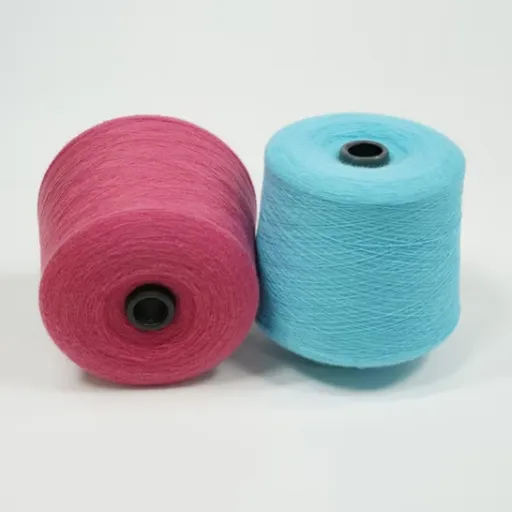
The maintenance of polyester and acrylic fabrics involves checking the garment label for instructions. Wash with cold or warm water and use a soft detergent to prevent damage. Do not dry with high heat, as it can both shrink and weaken the fibers. Instead, dry outside or use the dryer at a low heat setting. For wrinkle removal, use a low-temperature iron or a steamer, ensuring you place a protective cloth between the fabric and the iron. Adhering to these directions will not only help with but also guarantee the quality of your polyester and acrylic products.
Caring for Polyester Fabrics
Polyester is considered the easiest of all fabrics to care for because it is durable and it resists the factors that usually cause fabrics to degrade. It can be put in the washing machine and withstand frequent washing without losing its color or shape, making it perfect for daily use. Nevertheless, to prolong its life, it is advisable to wash in moderate temperatures and to stay away from bleach and strong detergents. In case of spots, the quickest way to treat them is one that does not affect the quality of the fabric. Giving the polyester care, which includes a drying process of low heat, also, ironing if necessary, the polyester clothes will still be in good condition after a long time.
Caring for Acrylic Fabrics
Acrylic fibers are very light, long-lasting, and wrinkle-resistant, making them widely used in garments and home textiles. The first step in acrylic fabric care is to wash it in cold or lukewarm water, as using very hot water can cause the fibers to lose their shape or even shrink. Machine washing on the delicate cycle is usually safe, or hand washing can be done for more fragile items. Mild detergents should be used to maintain the softness and integrity of the fabric, while bleach and harsh chemicals should be avoided. Acrylics can be air-dried, but if a dryer is used, the lowest heat setting should be chosen to prevent damage. If ironing is necessary, a low-heat setting should be used, and a protective cloth should be placed between the iron and the fabric to avoid direct contact. If cared for properly, acrylic fabrics can keep their lively colors and structure for a long time.
Choosing Between Acrylic and Polyester
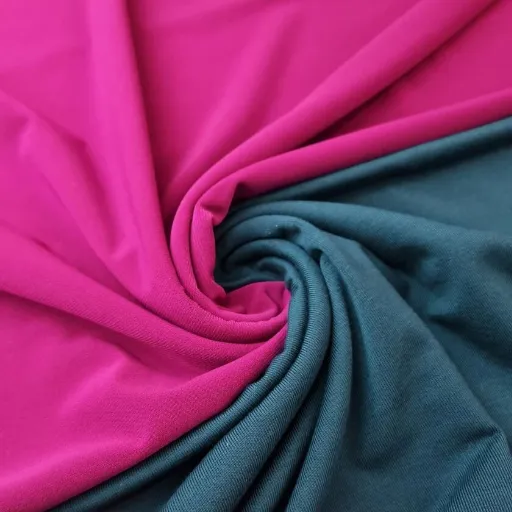
Deciding on acrylic or polyester depends on the project or garment’s requirements. Acrylic, being the lightest, softest, and warmest of them all, is primarily used in sweaters, scarves, and cold-weather clothing. It is almost like the feel of wool, but usually less expensive. In contrast, polyester is the opposite: resistant to tearing and wrinkling, and capable of drying in no time, thus making it the right choice for activewear, camping gear, and items that need to be washed frequently. Acrylic is the go-to for those who seek the maximum warmth and comfort, whereas polyester is the ultimate king in terms of durability and versatility.
When to Choose Polyester
When durability, low maintenance, and versatility are the primary considerations, polyester becomes the best option. The properties that polyester possesses, such as strength, wrinkle resistance, and quick-drying, make it very suitable for activewear and outdoor gear. The fabric also does great in washing because it retains its shape and resists shrinking and fading. Even more so, polyester is good in moisture-wicking applications and thus it becomes the favorite in the sportswear industry. Latest search trends reveal that polyester is gaining popularity as a material for home textiles like curtains, bedding, and upholstery because of its low price and stain-resistance qualities. If you want a fabric that is both durable and versatile, polyester is definitely a trustworthy choice.
When to Choose Acrylic
Acrylic is one of the best materials to choose if you need something lightweight, durable, and resistant to all kinds of weather. The most recent search engine data indicates that acrylic, due to its usage in outdoor furniture, signage, and home decoration, has seen a significant increase in searches. The synthetic fiber is popular because it can imitate the softness and warmth of wool, yet it is cheaper and easier to maintain. In addition to that, acrylic’s ability to resist fading and mildew makes it the best choice for places like your sunroom or bathroom, where there is a lot of light and moisture. For those who want their projects to be both versatile and aesthetic, acrylic will always be a favorite and practical option.
Final Thoughts on Acrylic or Polyester: Which is Better?
In the selection of acrylic or polyester, the final choice is dictated by the individual needs of the project. Personally, I consider acrylic to be a better choice for qualities such as softness, warmth, and resistance to fading or mildew, making it suitable for outdoor and decorative use. Conversely, polyester is an excellent choice due to its long-lasting and economical nature, and it is also easier to maintain; thus, it suits everyday items like clothing and upholstery best. The pros and cons of both materials differ, and the end use and personal preference determine the right choice.
Reference Sources
Here are three authoritative and professional references discussing polyester and acrylic fabrics that can also confirm the article’s correctness:
- University of Georgia Extension – Understand Your Fibers
This source explains the properties of polyester fibers, their mixes, and care in detail. - Fashion Institute of Technology (FIT) – Fashion and Technology Glossary
The glossary has extensive information on acrylics, including their characteristics and their usage in textiles. - University of Tennessee – Clothing and Textiles Intermediate Project Area Guide
This guide illustrates the differences between acrylic and polyester in terms of softness, warmth, and pilling tendency.
Frequently Asked Questions (FAQs)
❓ What is the main difference between polyester and acrylic?
The main difference lies in their composition and properties. Polyester is a synthetic fabric made from polyethylene terephthalate, while acrylic is made from synthetic fibers derived from acrylic acid. Polyester is often considered more durable and withstands wear and tear better than acrylic.
❓ Is acrylic yarn softer than polyester yarn?
Acrylic yarn is generally softer compared to polyester yarn, making it a popular choice for garments that are in direct contact with the skin. This softness makes acrylic a favored option for cozy sweaters and blankets.
❓ Can polyester and acrylic fabrics be used interchangeably?
While both fabrics can be used for similar applications, they have different characteristics. Polyester is often used for outdoor use due to its durability and moisture-wicking properties, whereas acrylic is preferred for its softness and warmth.
❓ What are the advantages of using acrylic over polyester?
Acrylic offers several advantages, including its lightweight nature and excellent color retention. It is also known for being breathable and providing warmth, making it suitable for colder climates.
❓ How does the moisture-wicking ability of polyester compare to acrylic?
Polyester is known for its moisture-wicking properties, making it an ideal choice for activewear. In contrast, acrylic may cause a feeling of dampness against the skin as it does not wick moisture as effectively as polyester.
❓ Which fabric is better for high temperatures: polyester or acrylic?
Polyester is often preferred in high-temperature situations because it can withstand higher temperatures without losing its shape. At the same time, acrylic is more susceptible to heat damage and may not perform as well under extreme conditions.
❓ How do natural fibers like cotton compare to acrylic and polyester fabrics?
Natural fibers like cotton are often softer and more breathable than both acrylic and polyester fabrics. However, they may lack the durability and moisture-wicking properties that synthetic fabrics like polyester offer.
❓ What factors should I consider when choosing between acrylic and polyester?
When choosing between acrylic and polyester, consider factors such as durability, softness, moisture-wicking ability, and intended use. For outdoor activities, polyester may be the better option, while for comfort and warmth, acrylic could be preferred.











